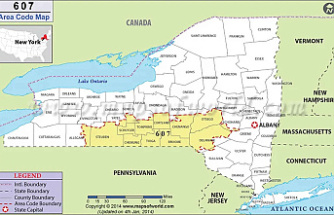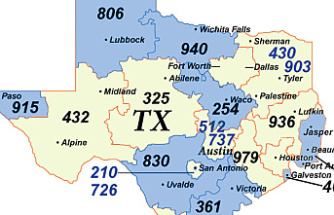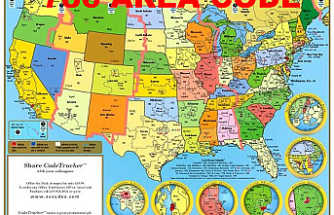DHS is creating contingency plans to address several possible scenarios, including the worst-case scenario in which 12,000-18,000 migrants enter the U.S. daily, DHS officials stated during a briefing with journalists. They also described migration flows that would overwhelm government processing capacity at the Mexican border.
According to a DHS contingency planning, the average daily number of migrants encountered by U.S. border officers is 7,101 per day. This follows a record 2,000,000 migrant arrests in 2021. Customs and Border Protection's short-term facilities at the southern border could hold 16,000 migrants if they were able to reduce their capacity for pandemics.
According to the DHS plan (the Southwest Border Strategic Concept of Operations), the government would have to increase CBP's holding capacity in order to hold between 25,000 to 30,000 migrants in U.S custody on any given day, in the event of the worst.
According to the strategic plan, such a scenario would require the government dispatching up to 2,500 law enforcement officers and 2,750 support personnel, plus more than 1,000 medical personnel, to the U.S.-Mexico frontier.
DHS officials stressed that worst-case scenarios were not government projections. This is what DHS does. The official stated that we plan for all types of contingency events, no matter how unlikely they are. "We must be prepared."
Officials requested anonymity to discuss internal planning. They did not give a timeline for the end of Title42, a pandemic-era policy that allows border officials to quickly expel migrants. They said that the decision is up to the Centers for Disease Control and Prevention, which is expected to announce it this week.
A DHS official stated that they cannot speak for the CDC and had no visibility into their processes. "We have literally no idea what will happen in the next days, just like you."
"It's not clear what the effect of Title 42's possible lifting in the coming days or weeks on migratory flow is, but we need be prepared for what's being considered a potential contingency. This is that Title 42 could increase flows."
Former DHS official Theresa Cardinal Brown now studies migration issues for the Bipartisan Center. She said that a sharp increase in border arrivals could pose significant logistical, humanitarian, and political challenges to the administration.
"They will be criticised by people who say, ‘You’re letting everyone into the country’ or people who claim, ‘You’re not providing processing we want.' Cardinal Brown stated that if their preparations don't meet the needs of the country, or if facilities become overwhelmed, there will be problems.
Officials stated that they are expanding the capacity of "soft-sided” migrant processing centers and building new ones. They expect to be operational by April 1. Officials added that DHS seeks to increase contracts with bus and plane operators in order to transport more migrants across the border.
The U.S. can currently transport approximately 5,000 migrants per day by land and 350 via air, according to the DHS strategic plan. The plan allows officials to increase that capacity if the worst happens.
CBP already has 400 agents at the southern border. This includes to ports of entry that process a small number of asylum-seekers. DHS officials said that the department is also working with federal agencies to help process migrants.
DHS launched a campaign to provide COVID-19 vaccinations to thousands of migrants held at border custody who cannot show proof of vaccination. According to CBP plans shared to Congress, the U.S. will distribute 2,700 doses per day during the first phase of the effort, and then expand to 6,000 by May's end.
Another sign that the Trump administration is planning to end Title 42 is the recent vaccination policy change. Title 42 was enacted by the Trump administration in March 2020 as a temporary response to a pandemic.
The Biden administration claimed Title 42 was necessary to prevent coronavirus epidemics within border facilities for 14 months. This angered advocates and Democratic allies, who claim the policy is illegal as it stops migrants seeking asylum in the U.S.
A recent court decision could force the administration to reduce Title 42. If the court order is upheld, border officials will have to evaluate whether families travelling with minor children to the U.S. could be at risk. This could also prompt the administration's decision to repeal Title 42.
Rochelle Walensky, Director of the CDC, has until Wednesday March 30 to decide if border officials can still use Title 42 in order to expel migrant families and adults to Mexico or other countries.
Regular immigration procedures are used to process migrants who aren't expelled under Title 42. This allows them to apply for asylum. They can be quickly deported or sent to long-term detention centres. Or they could be released with a notice of appearance before an immigration judge who can either grant asylum or deport them.
The majority of unaccompanied migrant children are exempted by Title 42 by the Biden administration and transferred to shelters managed and overseen the Department of Health and Human Services.
Title 42 expulsions were the result of more than half the 2,000,000 migrant arrests along the southern border in 2021. A record number of arrests were partly due to a high number of migrant adult migrants crossing the border multiple time after being expelled from northern Mexico.
A DHS official pointed out Tuesday that the main challenge facing the administration along the southern border is that more than 40% of migrants who enter the United States each month are from outside Mexico and Central America's Northern Triangle. He called it an "unprecedented" demographic shift.
The DHS official stated that one of the major challenges facing the country today is the large number of Nicaraguan and Cuban nationals as well as the increase in Venezuelan nationals at the border. "I believe that this is clearly tied to these regimes and the problems those countries are facing, both politically and economically."
Through different administrations, the U.S. has had difficulty deporting large numbers of Cubans/Nicaraguans and Venezuelans because of strained diplomatic relations. Mexico typically only accepts its citizens and migrants from Guatemala and El Salvador under Title 42.
According to the official, many of these migrants are coming to remote areas of the border like Del Rio, Texas and Yuma in Arizona. DHS only has limited processing capacity.
Officials at DHS stated that the Federal Emergency Management Agency provides "technical assistance", but has not yet deployed personnel to the southern border. The agency was last year tasked to help with processing unaccompanied children who arrived in record numbers at the U.S. border custody last spring.












